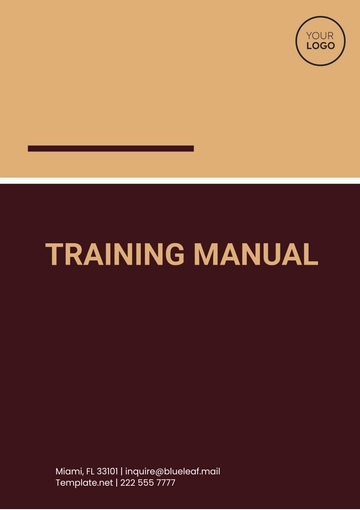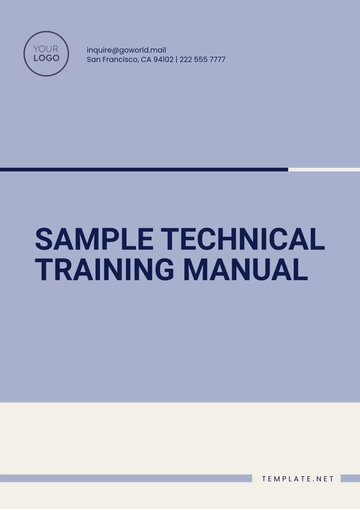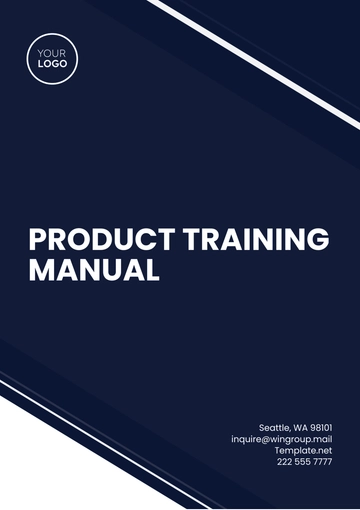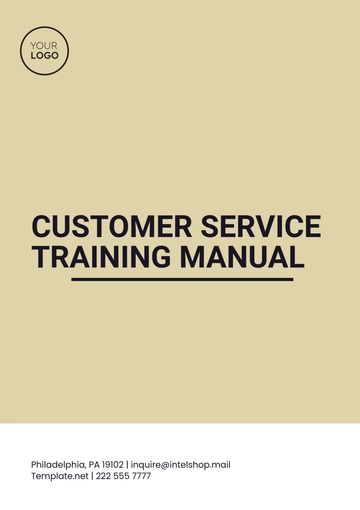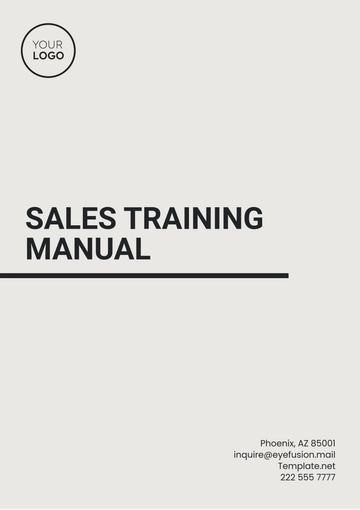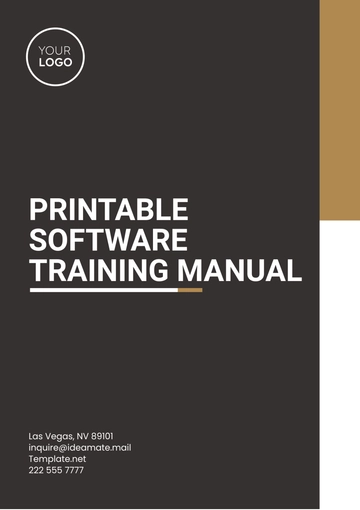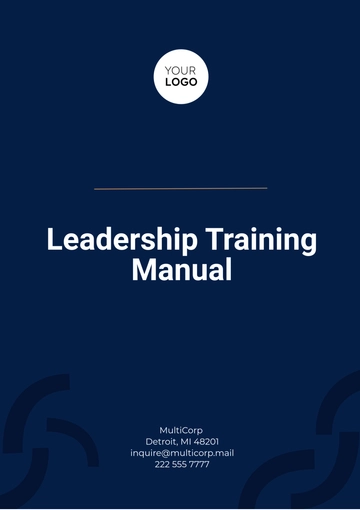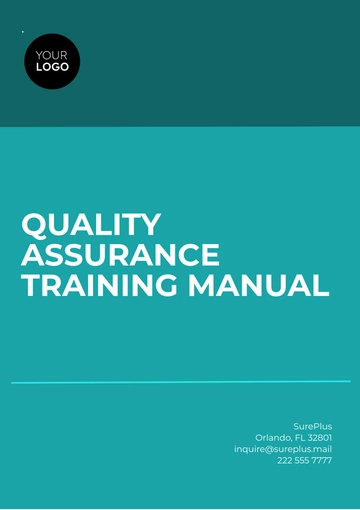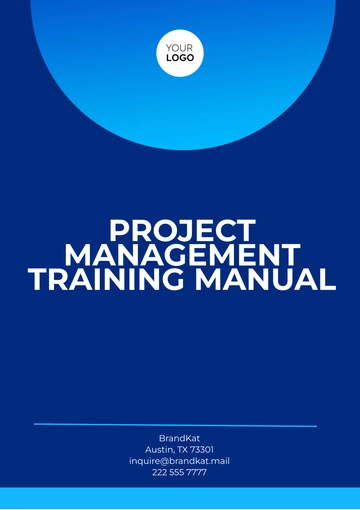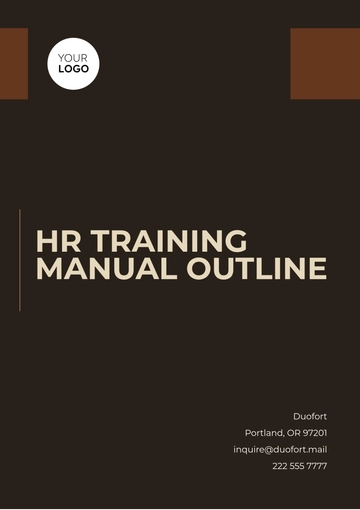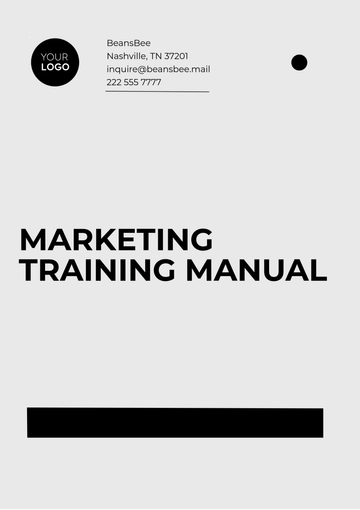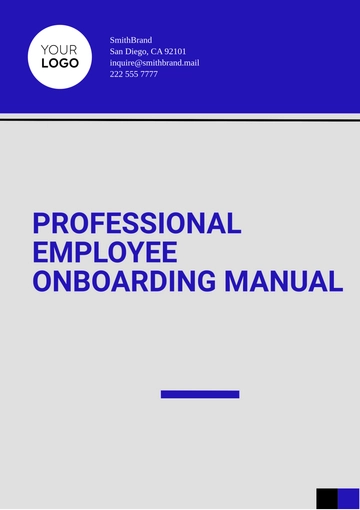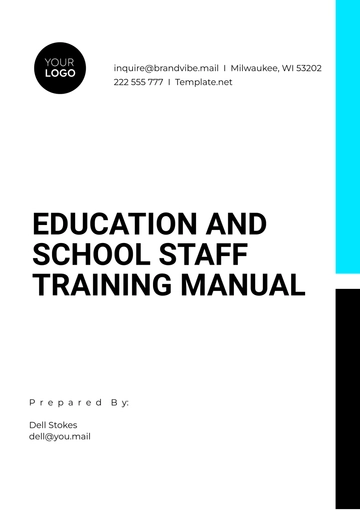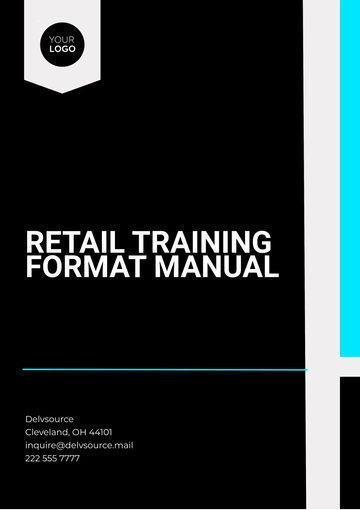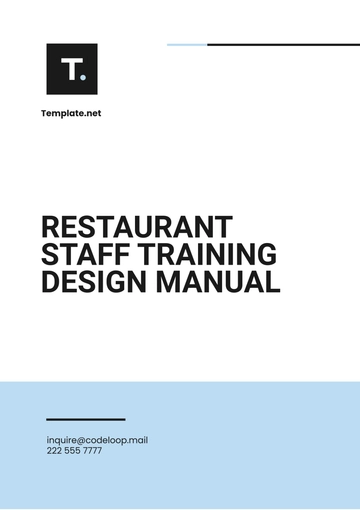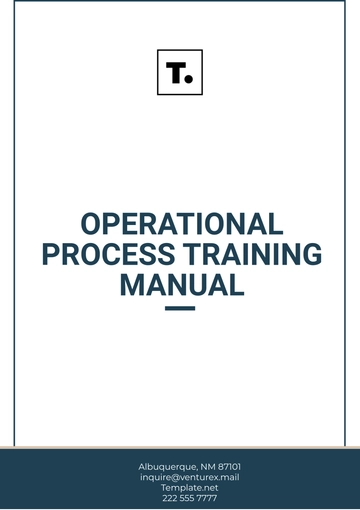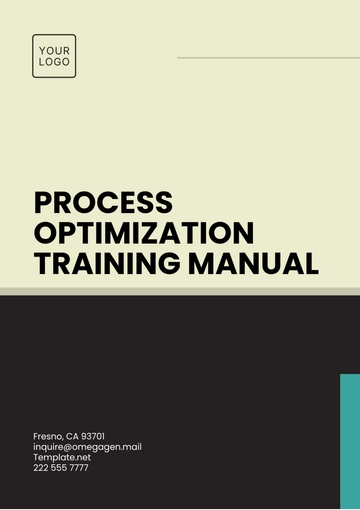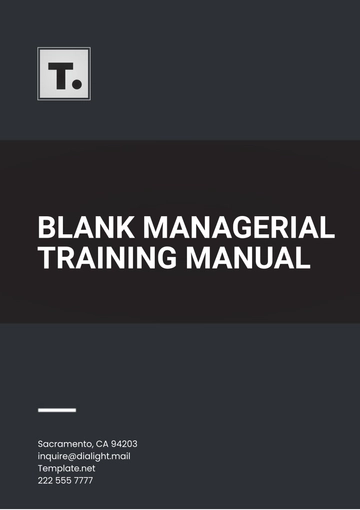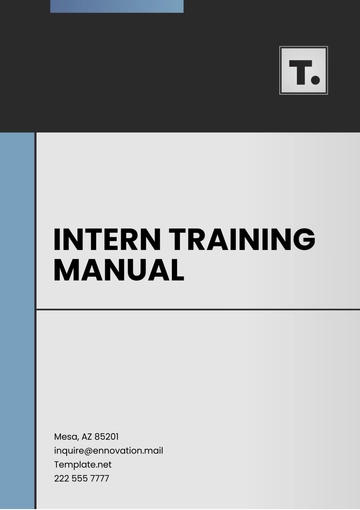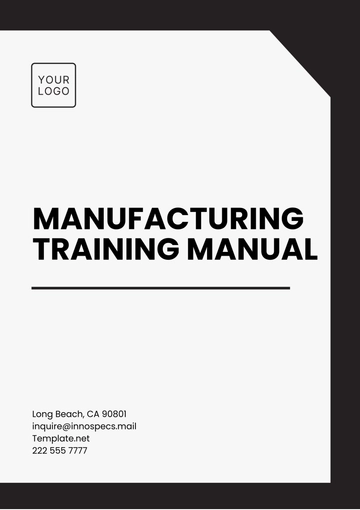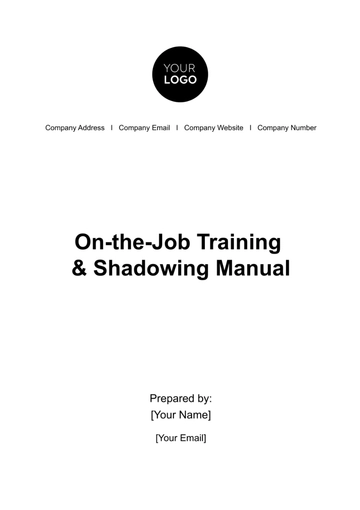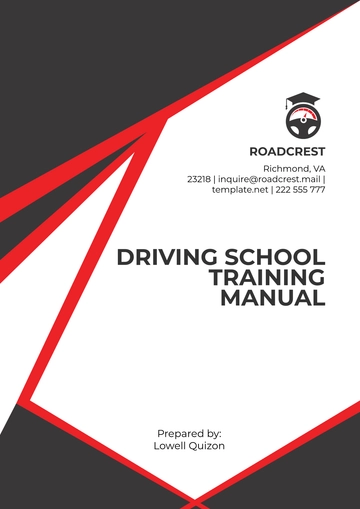Free Agriculture Equipment Training Manual
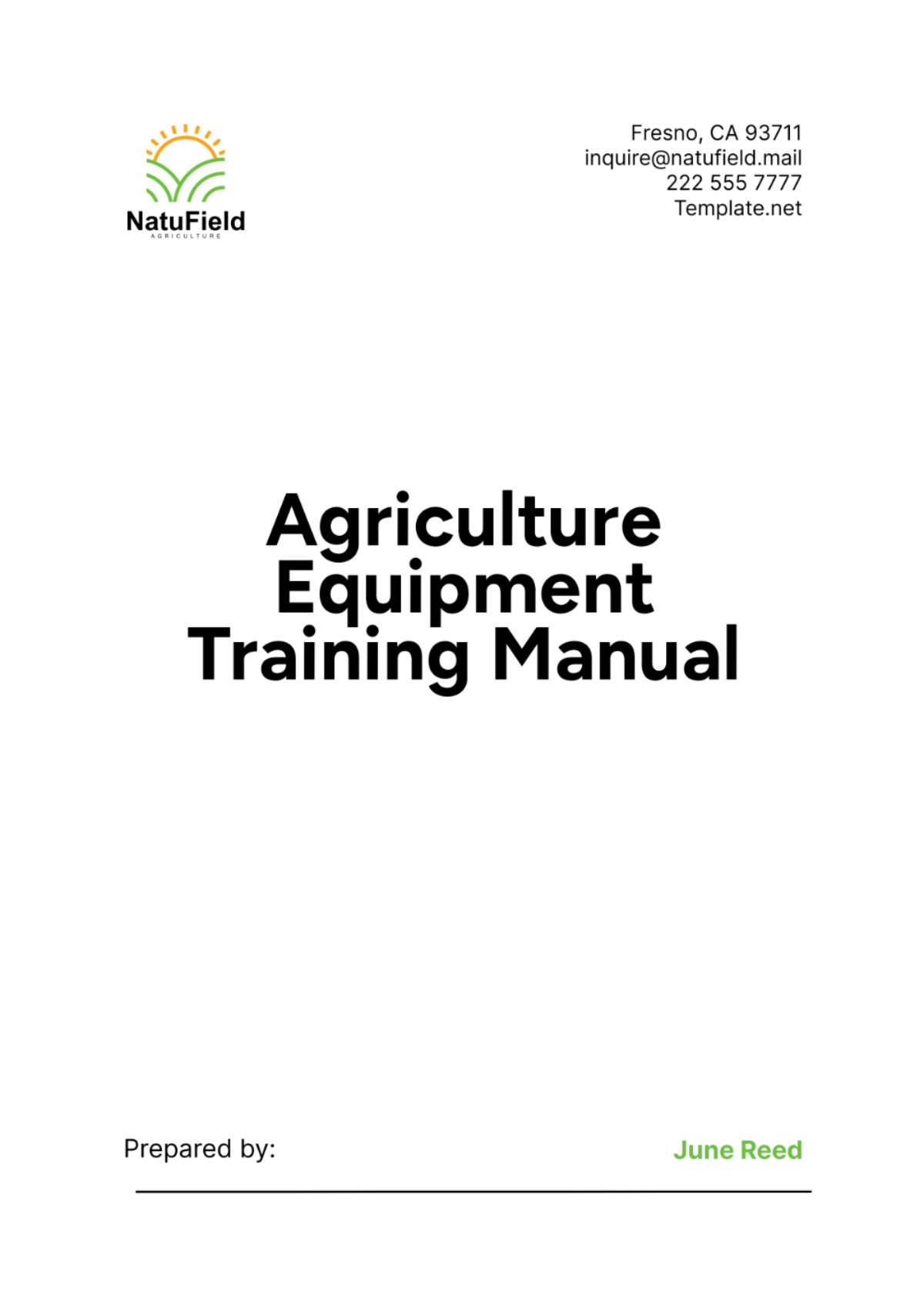
I. Equipment Operation
Learning how to operate agricultural equipment safely is crucial for all team members. This section provides detailed instructions on operating tractors, harvesters, and irrigation systems efficiently.
Topic | Detail |
|---|---|
Tractors: Starting Procedure | Turn the ignition key to the ON position. |
Depress the clutch and brake pedals simultaneously. | |
Engage the throttle to the desired RPM based on the task and terrain. | |
Release the parking brake slowly and ensure all controls are in neutral. | |
Gradually release the clutch while gently applying throttle to prevent jerking. | |
Tractors: Operating Techniques | Select appropriate gear based on terrain (low for rough terrain, high for flat surfaces). |
Use differential lock in muddy or slippery conditions to maintain traction. | |
Use steering wheel smoothly to avoid sudden turns that could destabilize the tractor. | |
Tractors: Stopping Procedure | Gradually reduce throttle and allow the engine to idle. |
Depress the clutch and brake pedals simultaneously. | |
Engage parking brake securely. | |
Turn off ignition and remove the key to prevent accidental starts. | |
Harvesters: Starting and Operating Procedures | Start engine as per manufacturer's instructions, ensuring all safety switches are engaged. |
Adjust cutting height and speed based on crop type and field conditions for optimal efficiency. | |
Monitor harvesting performance indicators (e.g., grain loss, moisture content). | |
Harvesters: Safety Considerations | Be aware of rotating parts and pinch points during operation. |
Implement regular maintenance checks to prevent equipment malfunctions. | |
Familiarize operators with emergency shut-off procedures in case of blockages or accidents. | |
Irrigation Systems: Startup and Operation | Prime the pump to ensure proper water flow through the system. |
Adjust sprinkler heads for even distribution of water across the field. | |
Monitor pressure gauges and flow meters to maintain optimal irrigation levels. | |
Irrigation Systems: Maintenance Tips | Clean nozzles and filters regularly to prevent clogging and ensure uniform water distribution. |
Lubricate pivot points and moving parts to reduce wear and extend equipment lifespan. | |
Calibrate timers and sensors seasonally to align with crop water needs and weather conditions. |
II. Maintenance Procedures
Proper maintenance is essential to prolong the life and performance of any agricultural equipment. This section covers routine maintenance tasks such as lubrication, filter changes, and regular inspections.
Topic | Detail |
|---|---|
Daily Maintenance | Lubricate all necessary points according to manufacturer's recommendations, including greasing fittings, pivot points, and bearings. Check and top-up fluid levels for fuel, engine oil, coolant, and hydraulic fluids to recommended levels. Inspect tires for proper inflation and tread wear. |
Weekly Maintenance | Change air filters to maintain engine performance. Inspect and clean battery terminals, ensuring secure connections. Grease fittings and pivot points to prevent wear and corrosion. |
Monthly Maintenance | Inspect and replace worn belts and hoses as needed. Check and adjust brake settings for optimal performance. Test safety systems such as lights and emergency stop mechanisms. |
Quarterly Maintenance | Drain and replace hydraulic fluids to maintain system integrity. Inspect and clean cooling system components to prevent overheating. Perform engine tune-up to ensure efficient operation. |
Annual Maintenance | Conduct thorough inspection of entire equipment for wear and potential issues. Replace fuel filters and inspect fuel lines for leaks or damage. Check and calibrate sensors and gauges for accuracy. |
III. Safety Protocols
Safety is paramount when handling agricultural machinery. This section outlines comprehensive safety guidelines, including machine-specific hazards and emergency procedures.
Topic | Detail |
|---|---|
Personal Protective Equipment (PPE) | Always wear appropriate PPE: gloves, safety glasses, ear protection, and sturdy footwear when operating machinery. |
Safety Signs | Follow all posted safety signs and warnings to mitigate risks and ensure safe operation. |
Equipment Safety Features | Do not bypass or disable safety features, guards, or shields on the equipment. |
Machine-Specific Hazards | Identify and understand specific hazards associated with each machine, such as moving parts or high-pressure systems. |
Emergency Procedures | Know and practice emergency shutdown procedures for each piece of equipment. Ensure all operators are trained in first aid and CPR. |
IV. Troubleshooting and Repairs
Encountering issues during equipment operation is common. This section provides troubleshooting tips for common problems and guidance on when to seek professional repair assistance.
Topic | Detail |
|---|---|
Common Problems | Identify common issues during equipment operation: Engine won't start or is difficult to start, unusual noises or vibrations during operation, hydraulic leaks or fluid loss. |
Troubleshooting Tips | Provide troubleshooting steps for each problem: Check fuel levels and quality for starting issues, inspect belts, pulleys, and bearings for unusual noises, trace and repair hydraulic leaks using appropriate seals or fittings. |
When to Seek Professional Help | Guide on when to involve professional repair services: Issues requiring specialized diagnostic tools or knowledge, complex electrical or hydraulic system faults, structural damage or welding repairs. |
Preventive Maintenance | Importance of regular maintenance to prevent major repairs: Schedule routine inspections and servicing, keep detailed maintenance records, train operators on early detection of issues. |
V. Storage and Seasonal Preparation
Proper storage and seasonal preparation of equipment are vital for ensuring peak performance. This section discusses best practices for storing equipment during off-seasons and preparing it for different weather conditions.
Topic | Detail |
|---|---|
Cleaning | Thoroughly clean equipment after each use to remove dirt, debris, and residue. Wash exterior surfaces and undercarriage to prevent corrosion. Remove plant material from cutting blades and intake systems. |
Fluid Management | Drain and replace fluids to prevent contamination and ensure optimal performance. Change engine oil, coolant, and hydraulic fluids according to manufacturer's recommendations. Top-up fuel stabilizer to prevent fuel degradation during storage. |
Inspect and Maintain | Conduct a comprehensive inspection and maintenance routine before storage. Check and replace worn or damaged belts, hoses, and filters. Lubricate moving parts and pivot points to prevent rust and seizing. |
Battery Care | Properly maintain batteries to avoid damage and ensure readiness. Clean terminals and connections to prevent corrosion. Store batteries in a cool, dry place and maintain charge levels. |
Protective Measures | Implement protective measures to safeguard equipment during storage. Cover equipment with tarps or specialized covers to shield from elements. Elevate equipment on blocks to prevent flat-spotting of tires. |
Weather Preparation | Prepare equipment for specific weather conditions. Install snow removal attachments and ensure proper tire chains for winter. Adjust tire pressure for optimal performance in varying terrain. |
Documentation | Maintain detailed records and documentation for storage and preparation. Document maintenance activities and dates for future reference. Store manuals and operating instructions in a dry, accessible location. |
Security Measures | Secure equipment against theft and unauthorized use. Lock storage facilities and install security cameras if possible. Use immobilizers or GPS tracking devices for added security. |
Training and Awareness | Train personnel on proper storage procedures and safety precautions. Educate operators on equipment-specific storage requirements. Conduct regular training sessions on theft prevention and security measures. |
Emergency Readiness | Prepare emergency kits and contingency plans for unexpected events. Include basic tools, first aid supplies, and emergency contact information. Establish protocols for responding to equipment damage or theft. |
Regular Inspection Schedule | Establish a schedule for regular inspections during storage periods. Check equipment periodically for leaks, pests, and environmental damage. |
VI. Tractor Operation
Tractors are versatile pieces of equipment used for various farming tasks. This section provides step-by-step instructions on how to operate a tractor safely and efficiently.
Step | Procedure | Detail |
|---|---|---|
1 | Pre-Operation Inspection | Conduct a thorough inspection before starting the tractor. Check fluid levels, tire condition, and functionality of brakes and lights. |
2 | Starting Procedures | Start and operate the tractor from the operator’s seat. Ensure all safety features are engaged before starting the engine. |
3 | Operating Guidelines | Adhere to speed limits and load capacities specified for the tractor model. Operate controls smoothly and avoid abrupt maneuvers. |
4 | Safety Measures | Always wear seat belts and ensure all passengers are seated securely. Use handholds and steps to mount and dismount safely. |
5 | Terrain and Weather Considerations | Adjust tractor operations based on terrain and weather conditions. Use appropriate traction aids and adjust tire pressure as needed. |
6 | Implement Attachments | Properly attach and secure implements such as plows or mowers before operation. Ensure implements are in good condition and adjusted correctly. |
7 | Turning and Maneuvering | Use proper turning techniques to minimize soil compaction and maintain stability. Avoid sharp turns and use caution on slopes. |
8 | Fuel and Maintenance | Monitor fuel levels during operation and refuel in a well-ventilated area. Follow manufacturer guidelines for routine maintenance and servicing. |
9 | Emergency Procedures | Know emergency shutdown procedures and how to respond to accidents or equipment malfunctions promptly. |
10 | Post-Operation Maintenance | Conduct post-operation checks and maintenance. Clean equipment and store in a secure location after use. |
VII. Harvester Operation
Harvesters are critical for crop collection and require precise operation. This section outlines the proper steps to operate a harvester and highlights key safety measures to follow.
Step | Procedure | Detail |
|---|---|---|
1 | Pre-Operation Inspection | Ensure the harvester is in good working condition by performing routine checks on belts, blades, and hydraulic systems. |
2 | Monitoring and Adjustments | Always monitor the harvesting process and make adjustments as needed to handle varying crop conditions effectively. |
3 | Safety Measures | Follow key safety measures to ensure safe operation of the harvester. Use appropriate personal protective equipment (PPE) and observe operational guidelines. |
4 | Crop Handling | Properly handle harvested crops to maintain quality and minimize losses. Follow best practices for loading and unloading harvested material. |
5 | Equipment Shutdown | Know emergency shutdown procedures and how to respond to equipment malfunctions promptly. |
6 | Post-Operation Maintenance | Conduct post-operation checks and maintenance. Clean equipment and store in a secure location after use. |
VIII. Irrigation System Operation
Irrigation systems are essential for crop hydration. This section explains how to operate different types of irrigation systems, including drip and sprinkler systems, to optimize water usage.
Step | Procedure | Detail |
|---|---|---|
1 | System Inspection | Regularly inspect the irrigation system for leaks, blockages, and overall condition. |
2 | Schedule Setting | Set the irrigation schedule based on crop needs and soil moisture levels. |
3 | Water Distribution | Ensure efficient water distribution to prevent waterlogging or drought stress. |
4 | Types of Irrigation Systems | Understand different types of irrigation systems such as drip and sprinkler systems and their specific operational procedures. |
5 | Maintenance | Perform routine maintenance tasks to keep the irrigation system in optimal condition. |
6 | Emergency Procedures | Know emergency shutdown procedures and how to respond to system malfunctions promptly. |
IX. Routine Inspections
Routine inspections are necessary to maintain equipment reliability and safety. This section details the steps to conduct thorough inspections and lists the items to check regularly.
Step | Procedure | Details | Frequency |
|---|---|---|---|
1 | Visual Inspection | Regularly inspect key components such as belts, chains, and hoses for wear and damage. Ensure there are no signs of cracking, fraying, or leaks. | Weekly |
2 | Fluid Levels | Check fluid levels (oil, coolant, hydraulic fluid) and top up as needed. Inspect for any signs of leaks or contamination. | Daily |
3 | Safety Guards | Inspect all safety guards to ensure they are in place and functioning properly. Verify that they securely cover moving parts and are not damaged or missing. | Before Each Use |
4 | Electrical Systems | Test electrical systems and components for proper operation. Check wiring for wear, corrosion, or loose connections. Ensure all lights and indicators are functional. | Monthly |
5 | Hydraulic Systems | Inspect hydraulic systems for leaks, damaged hoses, or low fluid levels. Check hydraulic pressure and adjust as needed according to equipment specifications. | Bi-weekly |
6 | Tires | Check tire condition, tread depth, and inflation pressure. Inspect for cuts, punctures, or abnormal wear patterns. Rotate tires as recommended by the manufacturer. | Quarterly |
7 | Braking System | Test braking system functionality. Ensure brakes engage smoothly and effectively. Check brake fluid level and condition. | Annually |
8 | Cooling System | Inspect radiator and cooling system for leaks, debris buildup, or blockages. Clean radiator fins and check coolant concentration and condition. | Seasonally |
9 | Fuel System | Check fuel lines, filters, and tanks for leaks or signs of damage. Monitor fuel quality and ensure proper fuel additives are used as recommended. | Quarterly |
10 | Steering and Suspension | Test steering responsiveness and check suspension components for wear or damage. Inspect ball joints, tie rods, and bushings. | Bi-annually |
X. Seeking Professional Assistance
When dealing with complex or persistent issues, it is crucial to seek professional assistance. This section provides guidance on when to contact a technician and how to communicate the issue effectively.
Step | Procedure | Details | Frequency |
|---|---|---|---|
1 | Assessment of Issue | Assess the equipment issue to determine if it requires professional intervention. Document symptoms, error codes, or unusual noises observed during operation. | As Needed |
2 | Contact Information | Contact [Your Company Name] at [Your Company Number] or email [Your Company Email] to request professional assistance. Provide details such as equipment model, serial number, and a concise description of the problem. | As Needed |
3 | Safety Considerations | Prioritize safety when dealing with complex or potentially hazardous equipment issues. Follow established safety protocols and isolate equipment if necessary to prevent further damage or injury. | As Needed |
4 | Communication with Technician | Clearly communicate the issue to the technician, including any troubleshooting steps already taken and their outcomes. Provide access to the equipment and facilitate inspection as needed. | As Needed |
5 | Documentation | Maintain records of all communications, diagnostic results, and repair actions taken by the technician. Document any recommendations for future maintenance or operational adjustments. | Ongoing |
XI. User Feedback
Your feedback is crucial to the continual improvement of this training manual. We value your suggestions and insights, as they play a pivotal role in refining our training resources and ensuring they meet the highest standards of effectiveness.
If you have encountered any challenges or have suggestions for enhancing the content, please reach out to us. You can email your feedback directly to [Your Company Email] or contact us via phone at [Your Company Number]. Your input enables us to enhance workplace safety and operational efficiency, fostering a proactive approach to equipment management and training excellence.
We appreciate your commitment to excellence and look forward to hearing from you. Together, we can further strengthen our commitment to delivering exceptional training materials that empower our team members and elevate our operational standards.
- 100% Customizable, free editor
- Access 1 Million+ Templates, photo’s & graphics
- Download or share as a template
- Click and replace photos, graphics, text, backgrounds
- Resize, crop, AI write & more
- Access advanced editor
At Template.net, our Agriculture Equipment Training Manual Template is designed to streamline your training processes. It's fully customizable and editable, ensuring it meets your specific needs. Editable in our AI Editor Tool, this template offers professionals an effortless way to create comprehensive manuals. Discover the ease and effectiveness our tool brings to your training sessions today.
